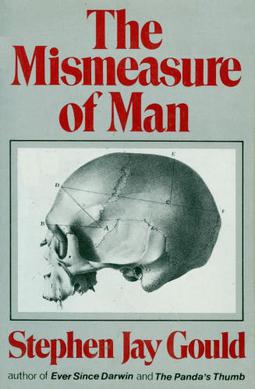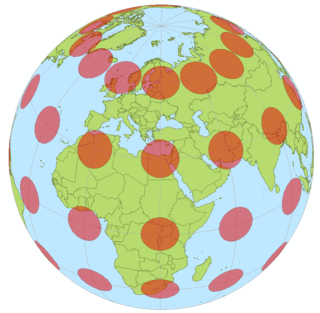Related Research Articles
Abstraction is a process wherein general rules and concepts are derived from the usage and classification of specific examples, literal signifiers, first principles, or other methods.

A concept is defined as an abstract idea. It is understood to be a fundamental building block underlying principles, thoughts and beliefs. Concepts play an important role in all aspects of cognition. As such, concepts are studied within such disciplines as linguistics, psychology, and philosophy, and these disciplines are interested in the logical and psychological structure of concepts, and how they are put together to form thoughts and sentences. The study of concepts has served as an important flagship of an emerging interdisciplinary approach, cognitive science.
Process philosophy, also ontology of becoming, or processism, is an approach in philosophy that identifies processes, changes, or shifting relationships as the only real experience of everyday living. In opposition to the classical view of change as illusory or accidental, process philosophy posits transient occasions of change or becoming as the only fundamental things of the ordinary everyday real world.

The Mismeasure of Man is a 1981 book by paleontologist Stephen Jay Gould. The book is both a history and critique of the statistical methods and cultural motivations underlying biological determinism, the belief that "the social and economic differences between human groups—primarily races, classes, and sexes—arise from inherited, inborn distinctions and that society, in this sense, is an accurate reflection of biology".
Reification may refer to:
An operational definition specifies concrete, replicable procedures designed to represent a construct. In the words of American psychologist S.S. Stevens (1935), "An operation is the performance which we execute in order to make known a concept." For example, an operational definition of "fear" often includes measurable physiologic responses that occur in response to a perceived threat. Thus, "fear" might be operationally defined as specified changes in heart rate, galvanic skin response, pupil dilation, and blood pressure.
Reification is the process by which an abstract idea about a computer program is turned into an explicit data model or other object created in a programming language. A computable/addressable object—a resource—is created in a system as a proxy for a non computable/addressable object. By means of reification, something that was previously implicit, unexpressed, and possibly inexpressible is explicitly formulated and made available to conceptual manipulation. Informally, reification is often referred to as "making something a first-class citizen" within the scope of a particular system. Some aspect of a system can be reified at language design time, which is related to reflection in programming languages. It can be applied as a stepwise refinement at system design time. Reification is one of the most frequently used techniques of conceptual analysis and knowledge representation.

The map–territory relation is the relationship between an object and a representation of that object, as in the relation between a geographical territory and a map of it. Mistaking the map for the territory is a logical fallacy that occurs when someone confuses the semantics of a term with what it represents. Polish-American scientist and philosopher Alfred Korzybski remarked that "the map is not the territory" and that "the word is not the thing", encapsulating his view that an abstraction derived from something, or a reaction to it, is not the thing itself. Korzybski held that many people do confuse maps with territories, that is, confuse conceptual models of reality with reality itself. These ideas are crucial to general semantics, a system Korzybski originated.
The fallacy of four terms is the formal fallacy that occurs when a syllogism has four terms rather than the requisite three, rendering it invalid.
Construct validity concerns how well a set of indicators represent or reflect a concept that is not directly measurable. Construct validation is the accumulation of evidence to support the interpretation of what a measure reflects. Modern validity theory defines construct validity as the overarching concern of validity research, subsuming all other types of validity evidence such as content validity and criterion validity.
Ideal type, also known as pure type, is a typological term most closely associated with the sociologist Max Weber (1864–1920). For Weber, the conduct of social science depends upon the construction of abstract, hypothetical concepts. The "ideal type" is therefore a subjective element in social theory and research, and one of the subjective elements distinguishing sociology from natural science.

Process and Reality is a book by Alfred North Whitehead, in which the author propounds a philosophy of organism, also called process philosophy. The book, published in 1929, is a revision of the Gifford Lectures he gave in 1927–28.
We diverge from Descartes by holding that what he has described as primary attributes of physical bodies, are really the forms of internal relationships between actual occasions. Such a change of thought is the shift from materialism to Organic Realism, as a basic idea of physical science.

Informal fallacies are a type of incorrect argument in natural language. The source of the error is not just due to the form of the argument, as is the case for formal fallacies, but can also be due to their content and context. Fallacies, despite being incorrect, usually appear to be correct and thereby can seduce people into accepting and using them. These misleading appearances are often connected to various aspects of natural language, such as ambiguous or vague expressions, or the assumption of implicit premises instead of making them explicit.
Hypostatic abstraction in mathematical logic, also known as hypostasis or subjectal abstraction, is a formal operation that transforms a predicate into a relation; for example "Honey is sweet" is transformed into "Honey has sweetness". The relation is created between the original subject and a new term that represents the property expressed by the original predicate.
Reification in natural language processing refers to where a natural language statement is transformed so actions and events in it become quantifiable variables. For example "John chased the duck furiously" can be transformed into something like

In philosophy, a construct is an object which is ideal, that is, an object of the mind or of thought, meaning that its existence may be said to depend upon a subject's mind. This contrasts with any possibly mind-independent objects, the existence of which purportedly does not depend on the existence of a conscious observing subject. Thus, the distinction between these two terms may be compared to that between phenomenon and noumenon in other philosophical contexts and to many of the typical definitions of the terms realism and idealism also. In the correspondence theory of truth, ideas, such as constructs, are to be judged and checked according to how well they correspond with their referents, often conceived as part of a mind-independent reality.
The mind projection fallacy is an informal fallacy first described by physicist and Bayesian philosopher E. T. Jaynes. In a first, "positive" form, it occurs when someone thinks that the way they see the world reflects the way the world really is, going as far as assuming the real existence of imagined objects. That is, someone's subjective judgments are "projected" to be inherent properties of an object, rather than being related to personal perception. One consequence is that others may be assumed to share the same perception, or that they are irrational or misinformed if they do not. In a second "negative" form of the fallacy, as described by Jaynes, occurs when someone assumes that their own lack of knowledge about a phenomenon means that the phenomenon is not or cannot be understood
In Marxist philosophy, reification is the process by which human social relations are perceived as inherent attributes of the people involved in them, or attributes of some product of the relation, such as a traded commodity.
References
- ↑ Reification, Encyclopædia Britannica
- 1 2 "Logical Fallacies, Formal and Informal". usabig.com. Archived from the original on 22 November 2011. Retrieved 10 April 2018.
- ↑ Dowden, Bradley. "Fallacy". Internet Encyclopedia of Philosophy. ISSN 2161-0002 . Retrieved 26 April 2021.
Whether a phrase commits the fallacy depends crucially upon whether the use of the inaccurate phrase is inappropriate in the situation. In a poem, it is appropriate and very common to reify nature, hope, fear, forgetfulness, and so forth, that is, to treat them as if they were objects or beings with intentions. In any scientific claim, it is inappropriate.
- ↑ "reification, n." OED Online. Oxford University Press, September 2016. Web. 24 September 2016. Format
- ↑ David K. Naugle (2002). Worldview: the history of a concept . Wm. B. Eerdmans Publishing. p. 178. ISBN 978-0-8028-4761-4.
- ↑ David Galin in B. Alan Wallace, editor, Buddhism & Science: Breaking New Ground. Columbia University Press, 2003, p. 132.
- ↑ Whitehead, Alfred North (1997) [1925]. Science and the Modern World. Free Press (Simon & Schuster). p. 52. ISBN 978-0-684-83639-3.
- ↑ Whitehead, Alfred North (1997) [1925]. Science and the Modern World. Free Press (Simon & Schuster). p. 58. ISBN 978-0-684-83639-3.
- ↑ James, William, The Meaning of Truth, A Sequel to 'Pragmatism', (1909/1979), Harvard University Press, pp. 135-136
- ↑ Winther, Rasmus G. (2014). James and Dewey on Abstraction. The Pluralist 9 (2), pp. 9-17 http://philpapers.org/archive/WINJAD.pdf
- ↑ Kaplan, R. M., & Saccuzzo, D. P. (1997). Psychological Testing. Chapter 5. Pacific Grove: Brooks-Cole.
- ↑ Pitkin, Hanna Fenichel (March 1987). "Rethinking reification". Theory and Society. 16 (2): 263–293. doi:10.1007/bf00135697. ISSN 0304-2421. S2CID 189890548.
- ↑ http://www.britannica.com/EBchecked/topic/446415/pathetic-fallacy pathetic fallacy. Retrieved on: 9 October 2012
- ↑ Schelling, Thomas C. (1980). The Strategy of Conflict. Harvard University Press. ISBN 9780674840317.